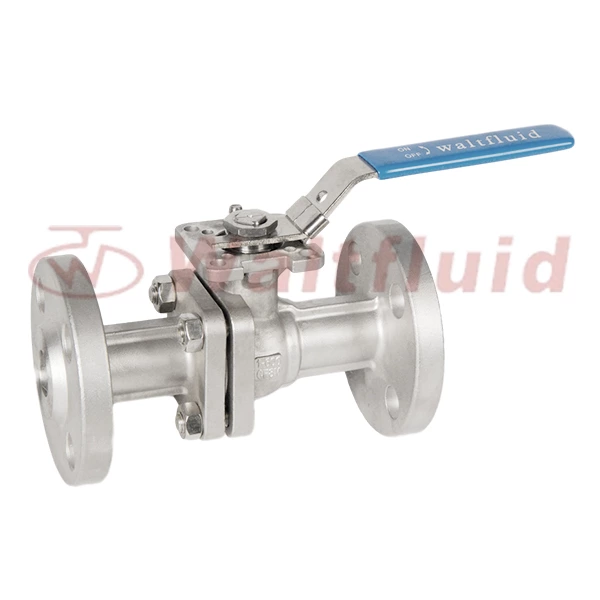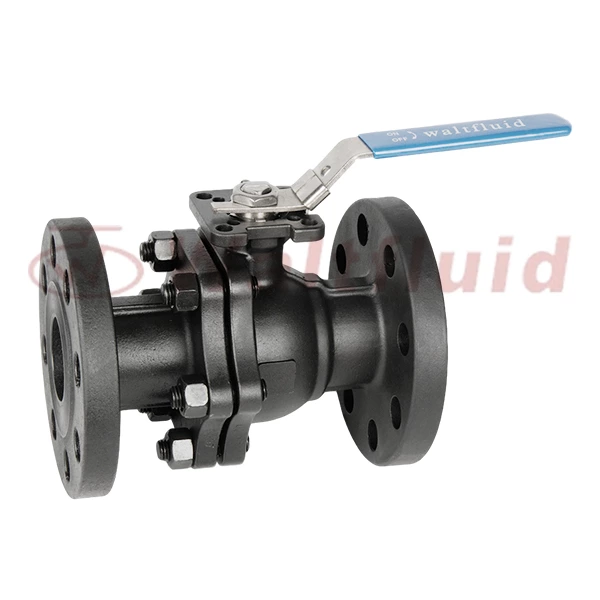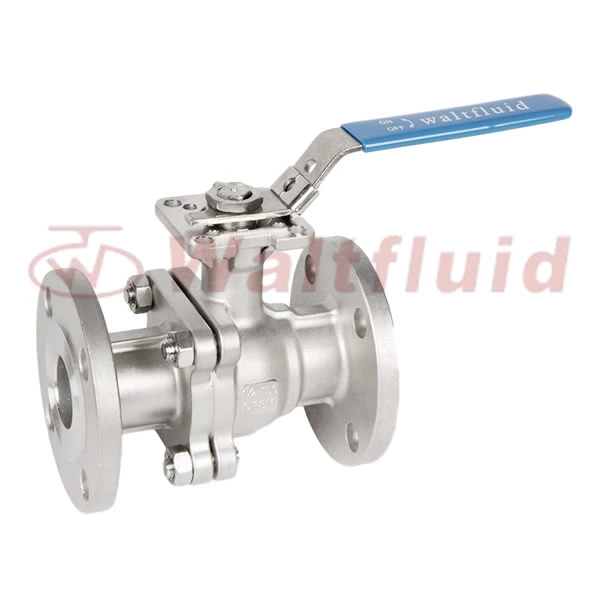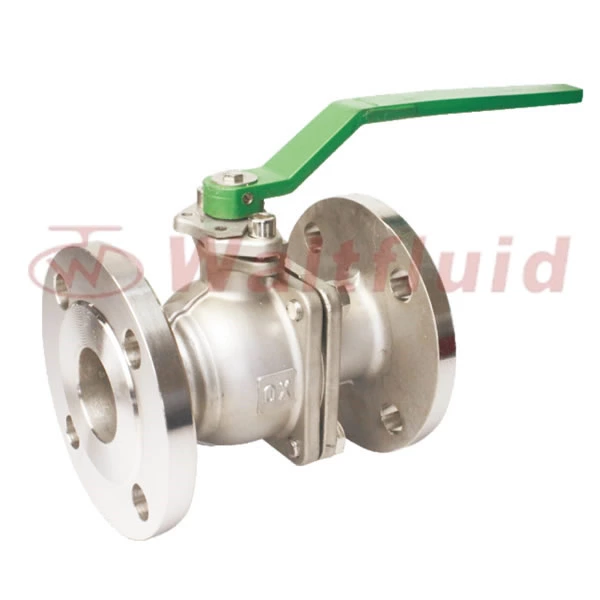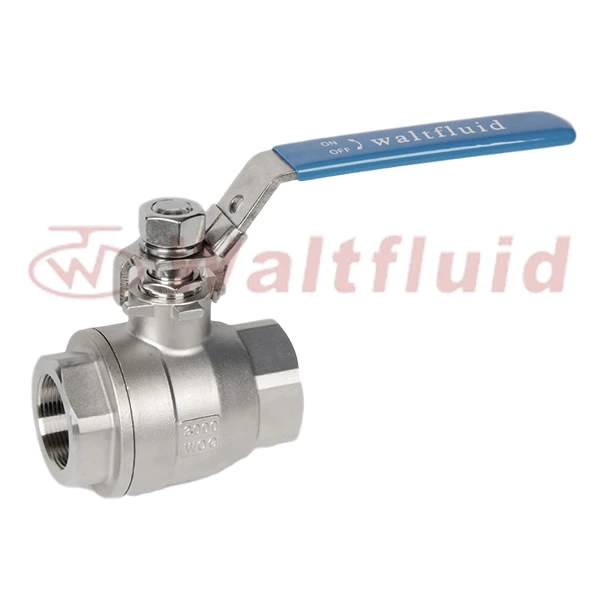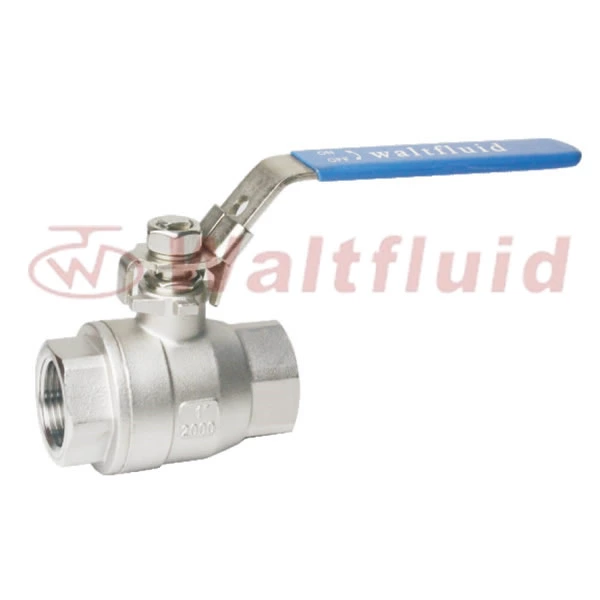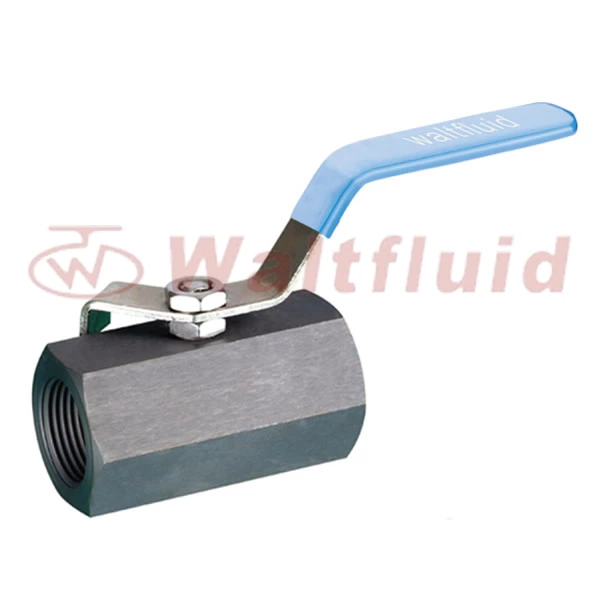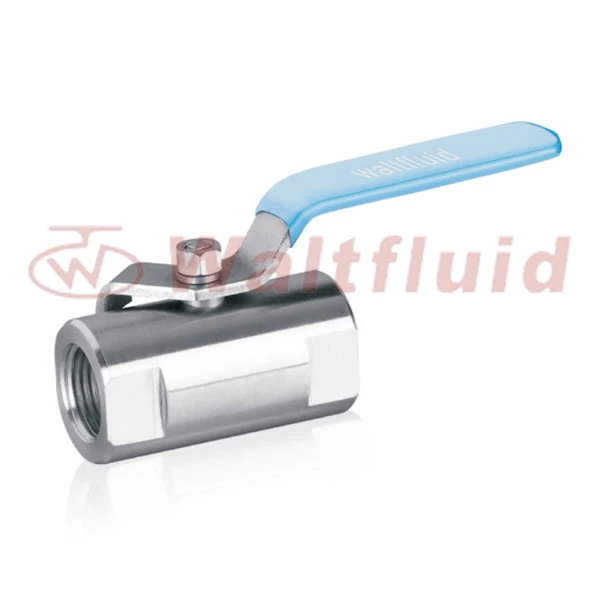Compare The Fields And Advantages Of Electric Ball Valves And Pneumatic Ball Valves
2 Piece Threaded Ball Valve is an automated device that uses air source as power to drive the ball valve to open and close, thereby realizing the switching and regulating actions of the medium, thereby achieving the purpose of switching or regulating the pipeline medium. The electric ball valve uses electrical energy as power to connect the electric actuator to drive the ball valve, realize the switching and regulating actions of the ball valve, and achieve the purpose of switching or regulating the pipeline medium. Next, let's take a closer look at the difference between pneumatic ball valves and electric ball valves?
1. First, let's understand how electric ball valves and pneumatic ball valves are explained
1. Electric ball valve, English name: motor-driven ball valve or electric ball valve. Electric ball valves are generally connected by electric actuators and ball valves, and become electric ball valves after device debugging. Electric ball valves use electrical energy as power to connect electric actuators to drive ball valves, complete the switching and regulating actions of ball valves, and then achieve the purpose of switching or regulating pipeline media.
2. Pneumatic ball valves are ball valves equipped with pneumatic actuators. The ball valve is driven to open and close by the air source, and then the medium is switched on and off, and the regulating action is completed, so as to achieve the purpose of switching or regulating the pipeline medium. The pneumatic ball valve is generally equipped with various accessories, such as solenoid valves, air source processing triplexes, limit switches, positioners, control boxes, etc., to achieve local control and remote centralized control. The valve can be switched in the control room without going to the site or high altitude and dangerous places for manual control, which saves human resources, time and safety to a great extent. The detailed classification of pneumatic ball valves includes: stainless steel pneumatic ball valves, plastic pneumatic ball valves, sanitary pneumatic ball valves, carbon steel pneumatic ball valves, two-way pneumatic ball valves, three-way pneumatic ball valves, and four-way pneumatic ball valves.
2. Select the type based on the difference between pneumatic ball valve and electric ball valve
1. The pneumatic valve has a larger action distance than the electric ball valve. The pneumatic valve switch action speed can be adjusted, the structure is simple, and it is easy to maintain. During the action, due to the buffering characteristics of the gas itself, it is not easy to be damaged by getting stuck, but it must have an air source, and its control system is more complicated than that of the electric valve. Pneumatic valves are responsive, safe and reliable. Many factories with high control requirements set up compressed air stations specifically for pneumatic surface control components. The power source of the pneumatic valve actuator is the air source, which comes from the air compressor. The positioner is used to convert the electric control signal into a pneumatic control signal to drive the pneumatic actuator to adjust the valve position.
2. The power source of the electric valve actuator is the power supply. If the circuit board or motor fails, sparks are likely to occur. Therefore, it is generally used in places where the environmental requirements are not high and there is no risk. The pneumatic actuator and the electric actuator have a better adjustment function. The pneumatic actuator has a faster response speed and is more suitable for use in adjustment conditions. Therefore, manufacturers that produce adjustment valves also produce pneumatic actuators to match them.
3. The pneumatic ball valve has a faster response speed than the electric ball valve. Generally, the switching time of the pneumatic ball valve is about 6 seconds. The pneumatic ball valve of VTON in the United States has a faster response time, with a switching time of 4 seconds, while the switching time of the electric ball valve is generally 15-20 seconds. Even the more famous German LIT electric ball valve has a response time of about 13 seconds.
4. The essential difference between electric valves and pneumatic valves is that they use different driving devices, that is, actuators. The cooperation of different actuators is mainly based on working conditions. For example, in chemical and other places that require explosion-proof, pneumatic valves are the most commonly used. Because of the high safety requirements and low price, they can be connected to the bus with intelligent positioners, and the control method is also simple.
5. Advantages of electric ball valves: good effect on liquid media and large-diameter gases, not affected by climate. Not affected by the pressure of compressed air. Disadvantages: high cost, not good in humid environments.
6. Advantages of pneumatic valves: good effect on gas media and small-diameter liquids, low cost, and easy maintenance. Disadvantages: affected by the fluctuation of compressed air pressure, it is easily affected by the water content of compressed air in winter in the north, causing the transmission part to freeze and not move.
3. How to choose to use electric ball valves or pneumatic ball valves
Under what circumstances do you need to use electric ball valves instead of pneumatic ones, when do you need to use pneumatic ones instead of electric ball valves, what are their advantages and disadvantages, and what about the price.
The pneumatic valve has a larger action distance than the electric valve. The speed of the pneumatic valve switch can be adjusted. The structure is simple and easy to maintain. During the action, due to the buffering characteristics of the gas itself, it is not easy to be damaged by getting stuck, but it must have a gas source, and its control system is more complicated than the electric valve.
The electric valve is driven by electricity and is not suitable for occasions with explosion-proof requirements. For example, when there is a large amount of flammable gas in the surrounding environment, it can only rely on pneumatics.
The pneumatic response time is slower than that of the electric. It is not as accurate as the electric. The pneumatic valve is powered by gas. The electric valve is powered by electricity converted into electromagnetic energy. The sensitivity of the electric valve is higher than that of the pneumatic valve, and the safety and reliability are not as strong as the pneumatic valve. The maintenance is not as simple as the pneumatic valve, and the power is not as strong as the pneumatic valve. The control of the pneumatic valve is more complicated than that of the electric valve. And the cost of each aspect is very expensive. If it involves automatic control, it is necessary to add an electromagnetic reversing valve, and the sensitivity of the electromagnetic reversing valve directly affects the pneumatic ball valve. I am more in favor of the first floor.
As long as there is electricity, electric valves can be used in some factories. Many tools and equipment use compressed air. In this case, pneumatic valves may be used because they are ready-made. The response is flexible, safe and reliable. Many factories with high control requirements set up compressed air stations specifically for pneumatic surface control components. Electric ones need electricity.
Pneumatic valves are obviously better than electric valves, but they require air sources. In this way, electric valves are used in places where air sources are inconvenient, and electric valves are not used in places with air sources.
In summary, electric ball valves act quickly and are mainly suitable for places without external air sources. They are easy to install and use, but their safety functions are poor. They are not easy to use in risky places such as flammable and explosive places with high explosion-proof requirements. They are not as stable as pneumatic valves during use, and the maintenance volume is relatively large; the action speed of pneumatic ball valves is slightly inferior to that of electric valves, but they can fully meet the control requirements. Their safety functions are relatively high and they are widely used in places with high explosion-proof requirements such as flammable and explosive places. However, the installation and use requires external air sources. It is more cost-effective to use more than one, and an air source base can be established.
Conclusion: Pneumatic ball valves and electric ball valves both belong to the category of automation instruments and have many similarities, but we must also pay attention to the needs of industry and mining. Only by choosing the right type can automation be better developed and safer.
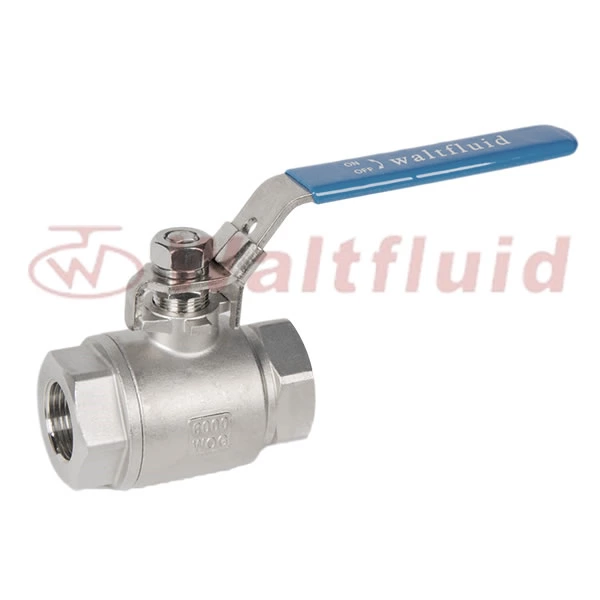
 English
English 中文
中文 Pусский
Pусский  Español
Español
